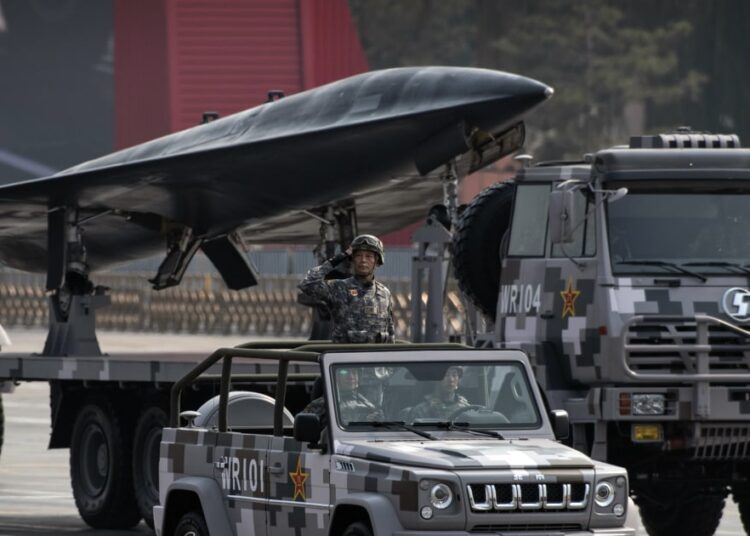This content provides a comprehensive historical overview of military weapons, tracing their evolution from ancient times to modern warfare. It explores the transition from traditional weapons like swords and spears used by ancient warriors to the invention of gunpowder and the introduction of long-range firearms. The content then discusses the impact of World Wars on military technology, including the development of tanks, machine guns, and aircraft. The nuclear era is highlighted, with the emergence of atomic bombs and the advancements in missile systems. The content also touches upon modern warfare, featuring stealth aircraft, drones, and the rise of cyber warfare. The conclusion emphasizes the importance of responsible and ethical deployment of military capabilities.
A Historical Overview of Military Weapons: From Swords to Stealth Fighters
Introduction
Military weapons have played a crucial role in shaping the course of history. From ancient times when battles were fought with swords and spears to modern warfare where advanced technology is at the forefront, the evolution of military weapons mirrors the progress of human civilization. This article provides a comprehensive historical overview of military weapons, exploring the transition from traditional weapons to the cutting-edge stealth fighters of today.
Ancient Weapons – Swords and Sieges
The earliest military weapons can be traced back thousands of years to the ancient civilizations. Swords, axes, spears, and shields were the primary weapons used by ancient warriors. These weapons were typically made of stone, wood, or metal, and required exceptional skill and physical strength to wield effectively. However, as military tactics advanced, the development of siege weapons such as battering rams and catapults allowed armies to breach fortified walls and gain an advantage in battles.
The Gunpowder Revolution
The invention of gunpowder in the 9th century revolutionized warfare. Guns, cannons, and muskets quickly replaced traditional melee weapons, giving a significant advantage to armies with firearms. The firearm era marked a shift towards long-range combat, changing the dynamics of warfare by increasing the lethal force of soldiers and rendering heavy armor obsolete. Furthermore, the emergence of naval cannons revolutionized naval warfare, transforming the oceans into contested battlefields.
World Wars and Technological Advancements
The 20th century witnessed two devastating World Wars that led to a rapid escalation in military technology. The development and deployment of tanks, machine guns, chemical weapons, and aircraft changed the face of warfare forever. Tanks provided mobile firepower, machine guns offered rapid and sustained fire, chemical weapons introduced a new level of terror, and aircraft enabled warfare to transcend the boundaries of land and sea. The birth of aerial warfare was a turning point that led to the emergence of air-to-air combat and strategic bombing.
The Nuclear Era
The conclusion of World War II marked the beginning of the nuclear era. The devastating power of atomic bombs ushered in an era of mutually assured destruction, with nations seeking to avoid large-scale conflicts due to the catastrophic consequences that nuclear weapons posed. This era saw the development of intercontinental ballistic missiles (ICBMs) capable of carrying nuclear warheads, forming the backbone of many nations’ defense strategies. The Cold War between superpowers was characterized by intense competition in military technology, leading to significant advancements in missile systems, radar technology, and satellite reconnaissance.
Modern Warfare: Stealth Fighters and Cyber Warfare
The latter half of the 20th century and beyond witnessed the emergence of advanced technology in warfare. Stealth aircraft, such as the F-117 Nighthawk and the B-2 Spirit, revolutionized aerial combat by being virtually invisible to radar detection. These aircraft could deliver precision strikes on enemy targets with minimal risk of interception. The development of unmanned aerial vehicles (UAVs), commonly known as drones, further expanded the capabilities of modern military forces by providing remote surveillance and targeted strikes.
In addition to conventional warfare, the 21st century saw the rise of cyber warfare. With the increasing reliance on interconnected computer systems and digital networks, cyberspace became a new battlefield. Cyberattacks have the potential to disrupt critical infrastructure, cripple economies, and undermine national security. Governments and organizations worldwide invest significant resources in cybersecurity to protect their networks and prevent unauthorized access or attacks.
Conclusion
From ancient swords to stealth fighters and cyber warfare, military weapons have evolved alongside human progress. The history of military weapons reflects the changing nature of warfare and the continuous quest for an advantage on the battlefield. As technology continues to advance, it is crucial to ensure its ethical and responsible deployment, keeping in mind the devastating consequences that unchecked military capabilities can yield. Understanding this historical overview provides valuable insights into the evolution of military weapons and their profound impact on the course of history.












